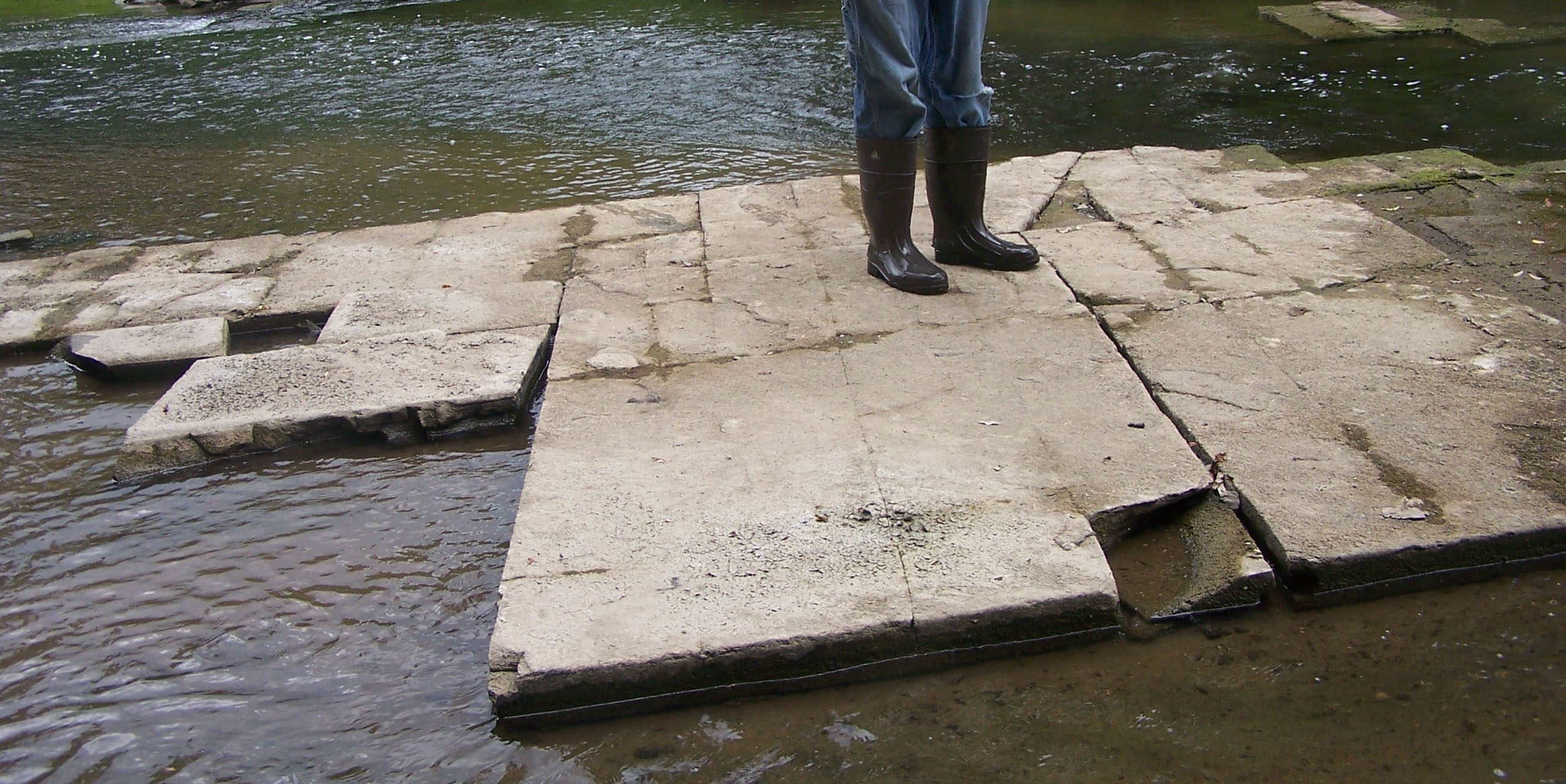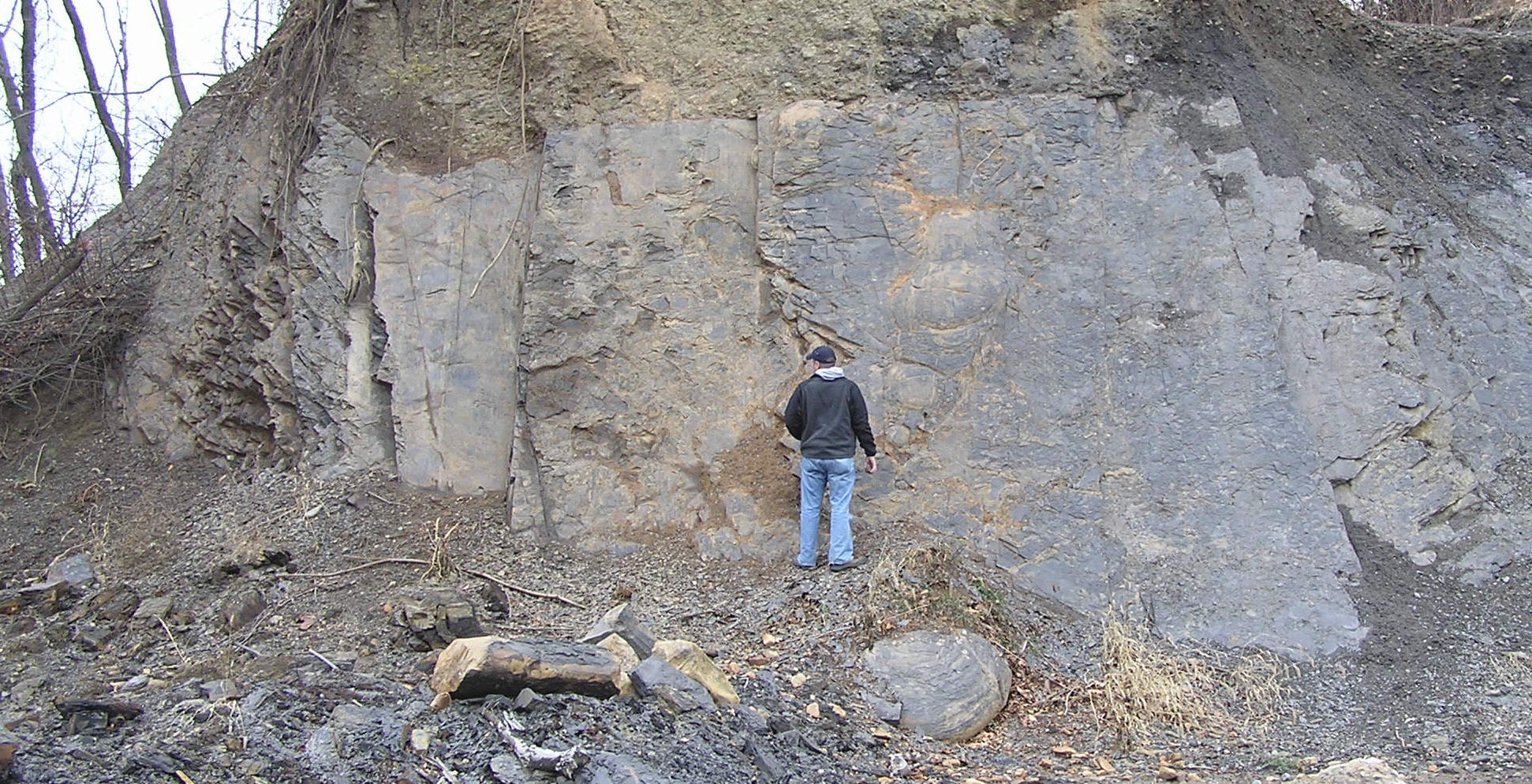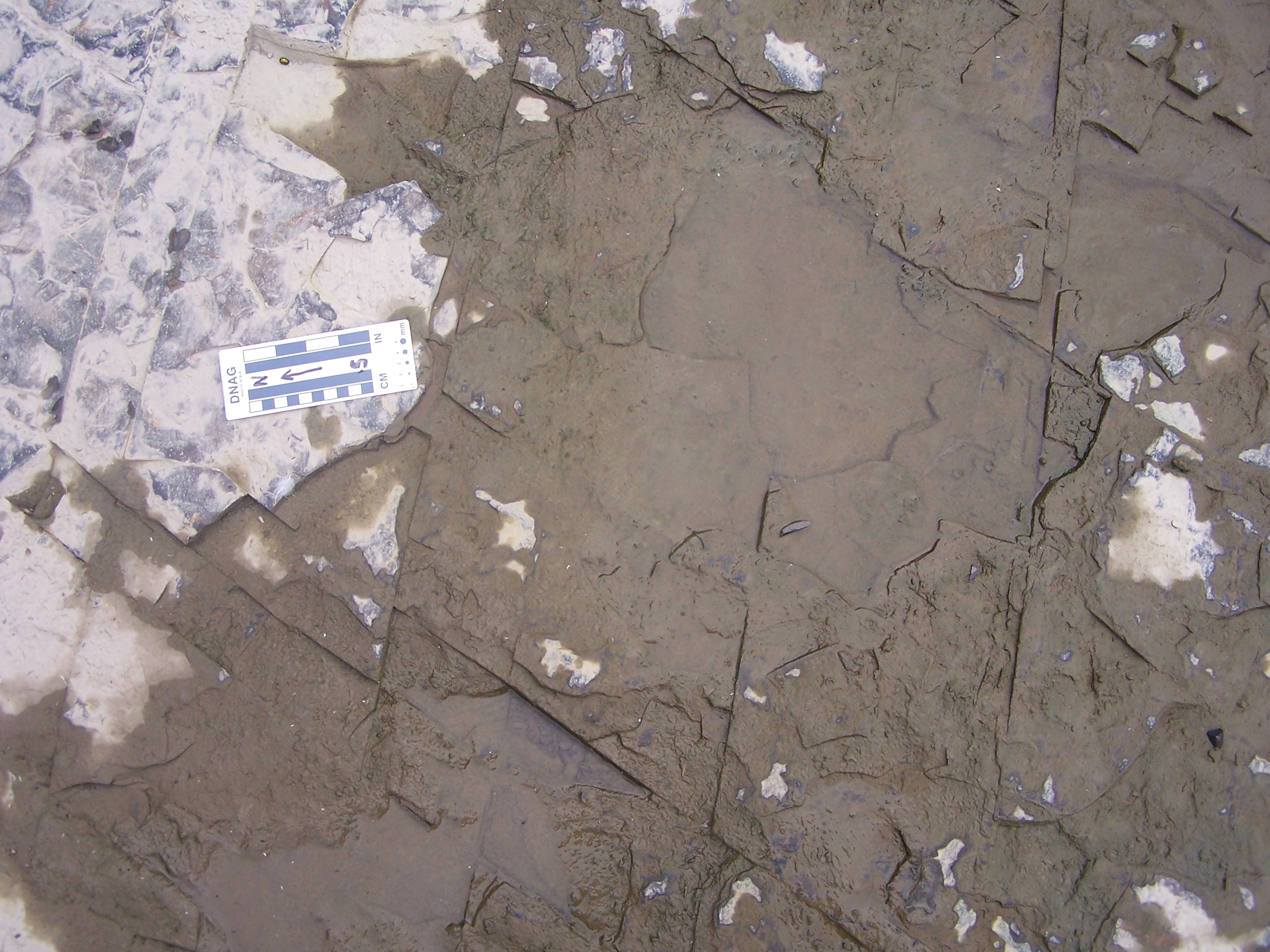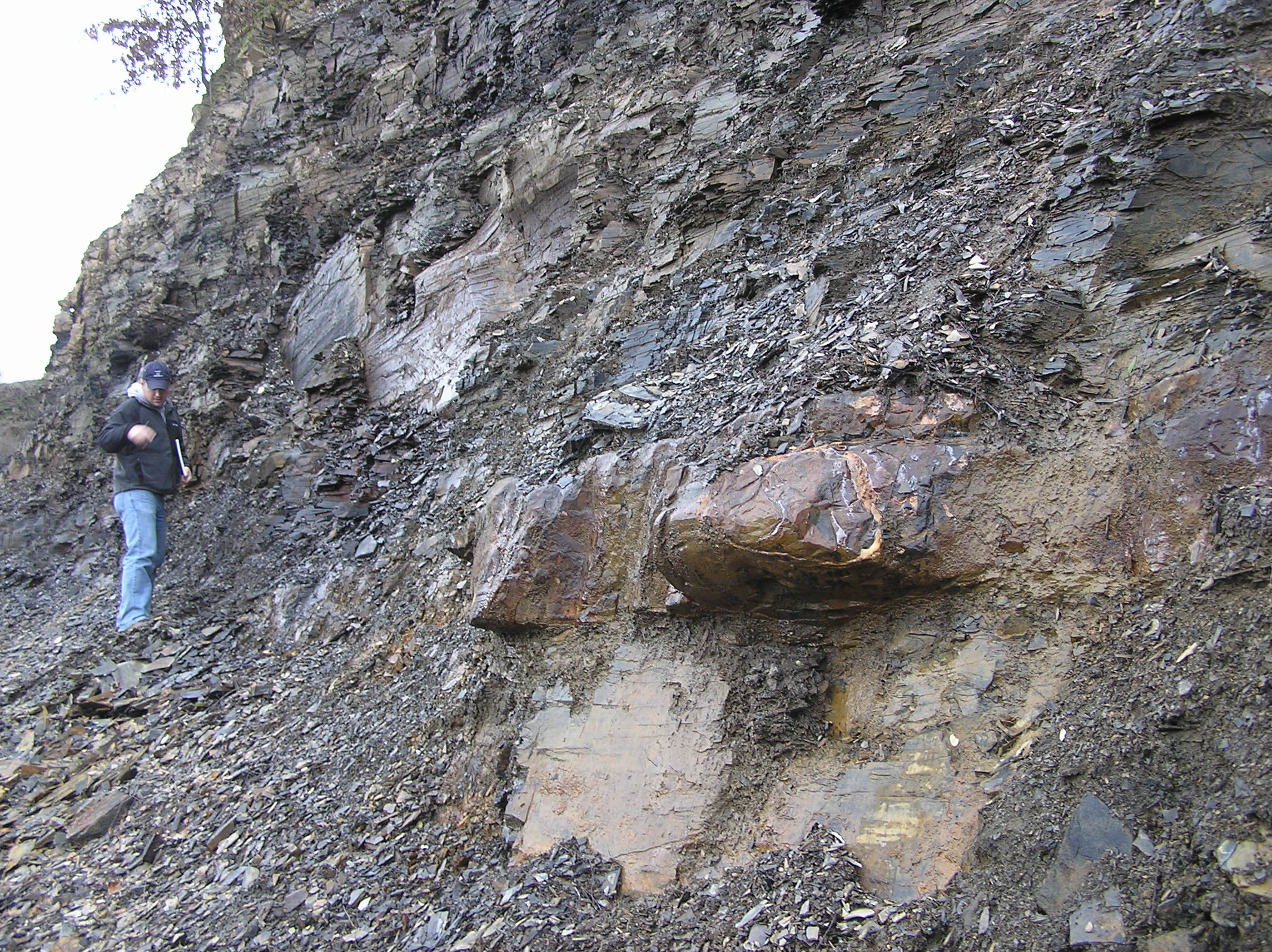|
Scroll Down  {Route 54 south of Washingtonville, PA} In this outcrop the Marcellus is not heavily fractured. In viewing this outcrop is it easy to understand why many vertical wells penetrated the entire 30m + thickness of Marcellus without encountering a single joint. Yet, even with joints spaced in excess of 5 meters, a 500 meter horizontal well could expect to penetrate upwards of 100 joints. The geologist in this picture is Prof. Richard Nickelsen of Bucknell University.  {Oatka Creek, Leroy, NY} Crosscutting joints in the Marcellus black shale exposed on the Appalachian Plateau where outcrops are nearly horizontal. Joints cutting front to back are the J1 set and joints cutting right to left are the J2 set. Note the closer spacing of J1 which means that this set a richer target for horizontal drilling. View is to the ENE.  {Antis Fort, Pennsylvania} J1 and J2 joints in the Marcellus black shale within overturned beds just sorth of the Allegheny Front. The view is to the north looking at the underside of bedding. J1 joints are vertical joint in this outcrop whereas J2 joints dip steeply to the east. J2 are best developed in to the left where they are seen cutting from upper left to lower right. This section of the Marcellus contains large concretions with one just below the geologist who is graduate student, David Cannon, of the Pennsylvania State University.  {Como Park, Lancaster, NY} Crosscutting joints in the Marcellus black shale exposed on the Appalachian Plateau where outcrops are nearly horizontal. In contrast to the photo along Oatka Creek (above), the J1 and J2 joint sets do not cross at right angles. This is so because J1 has the same orientation regardless of position around the oroclinal bends of the Appalachian Mountains whereas J2 propagation in cross-fold orientations and thus change orientation to remain normal to the oroclinal bend. The arrow on the scale does NOT indicate north.  {Elimsport, PA} This section of the Marcellus is concretion rich with bedding dipping gently to the left (south). A J1 joint in the foreground may be seen cutting around but not cleaving the concretions in the photo. Joints driven by high fluid pressure fail to cut or cleave concretions. This is another piece of evidence that the J1 joint set is a deep-formed natural hydraulic fracture. The geologist in this picture is graduate student, David Cannon, of the Pennsylvania State University. |